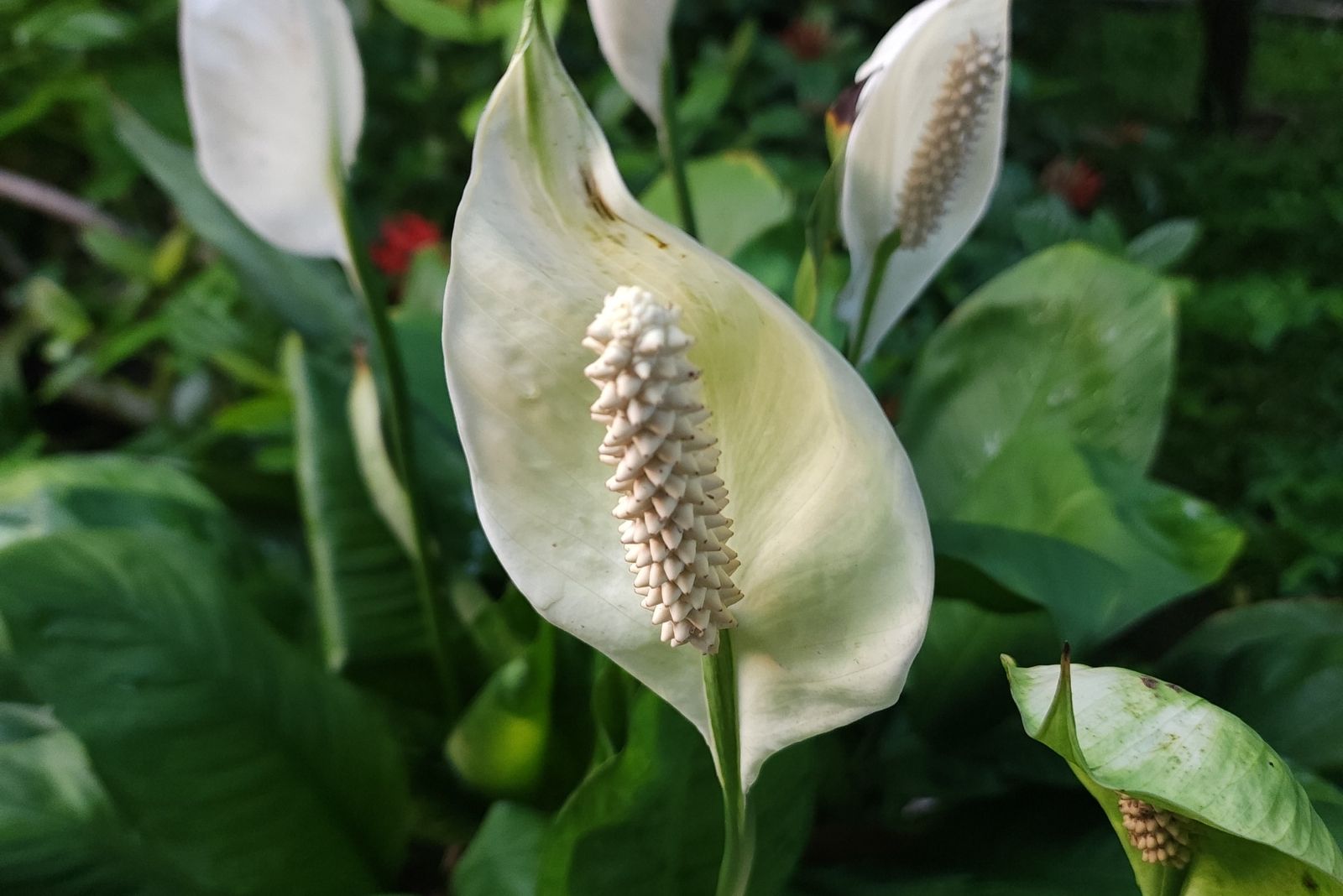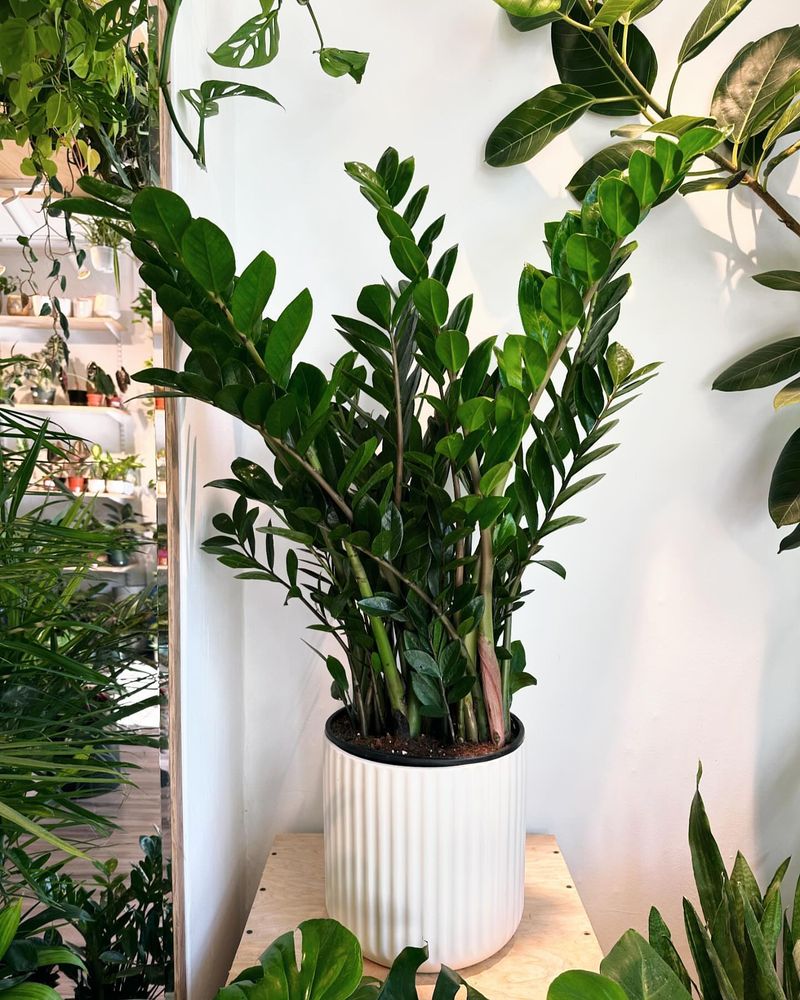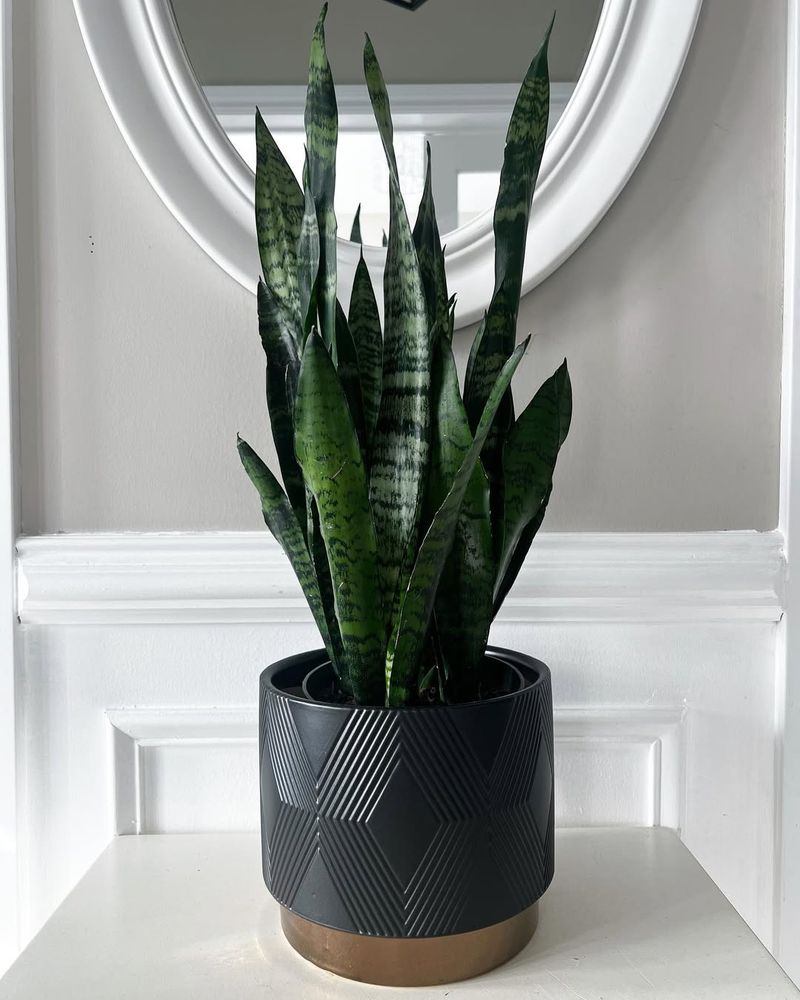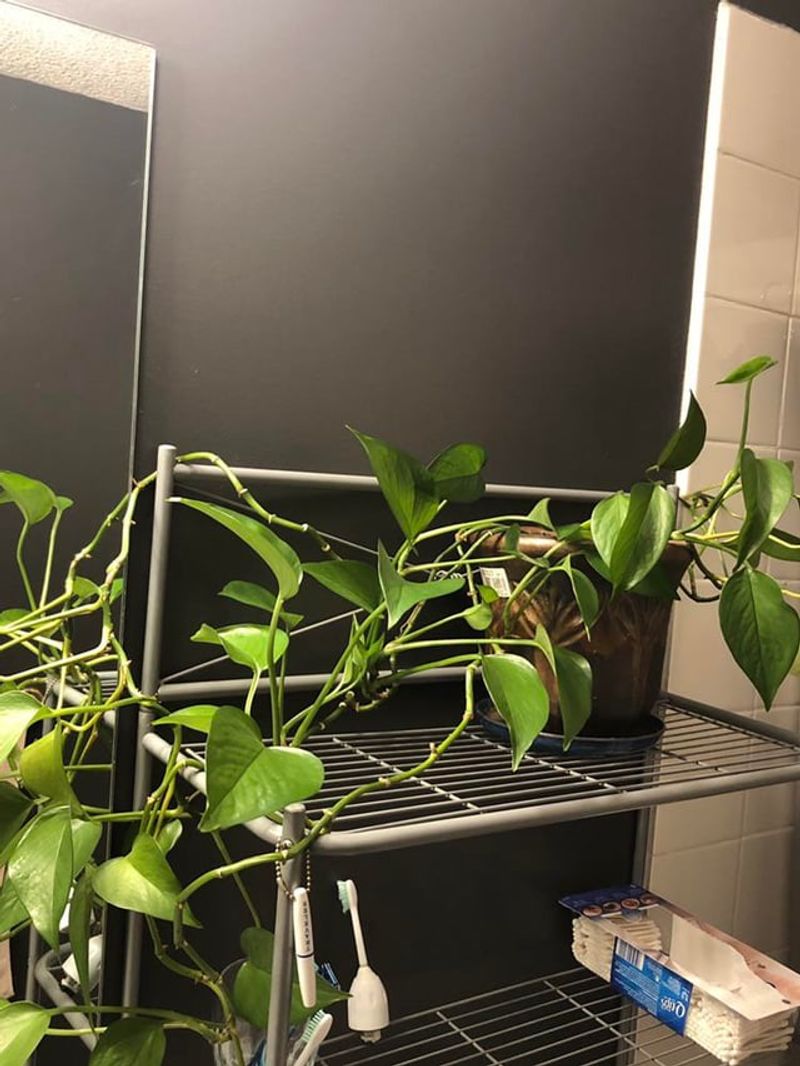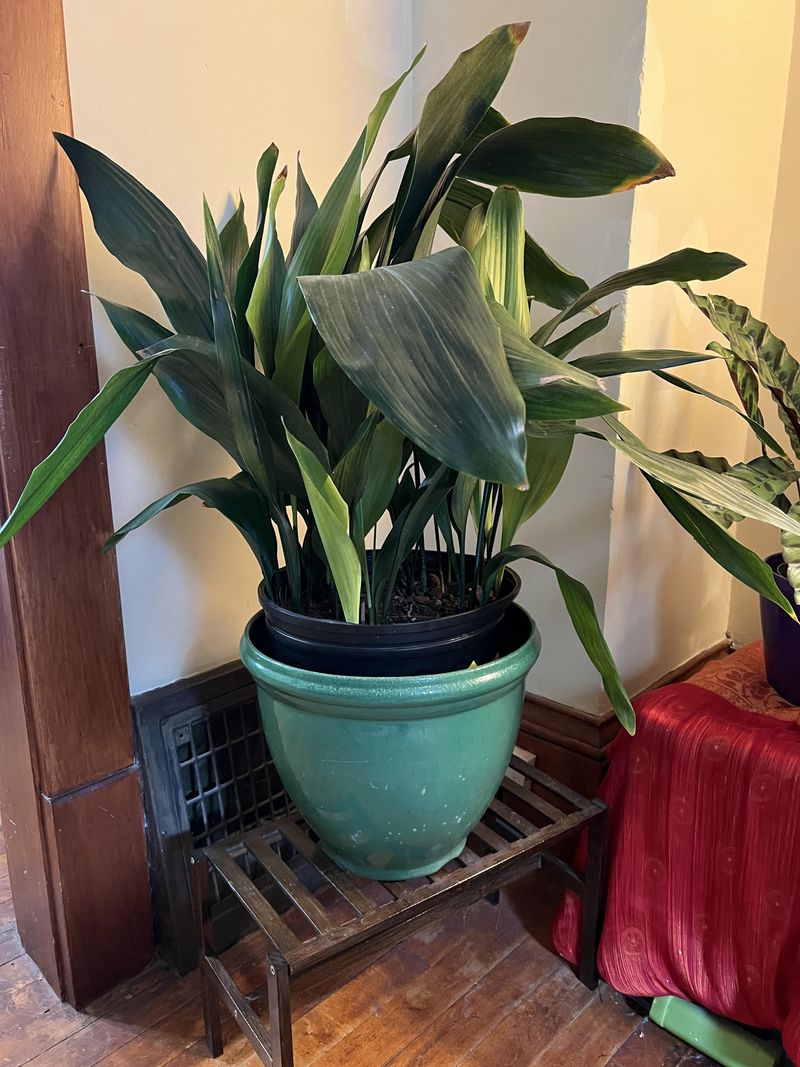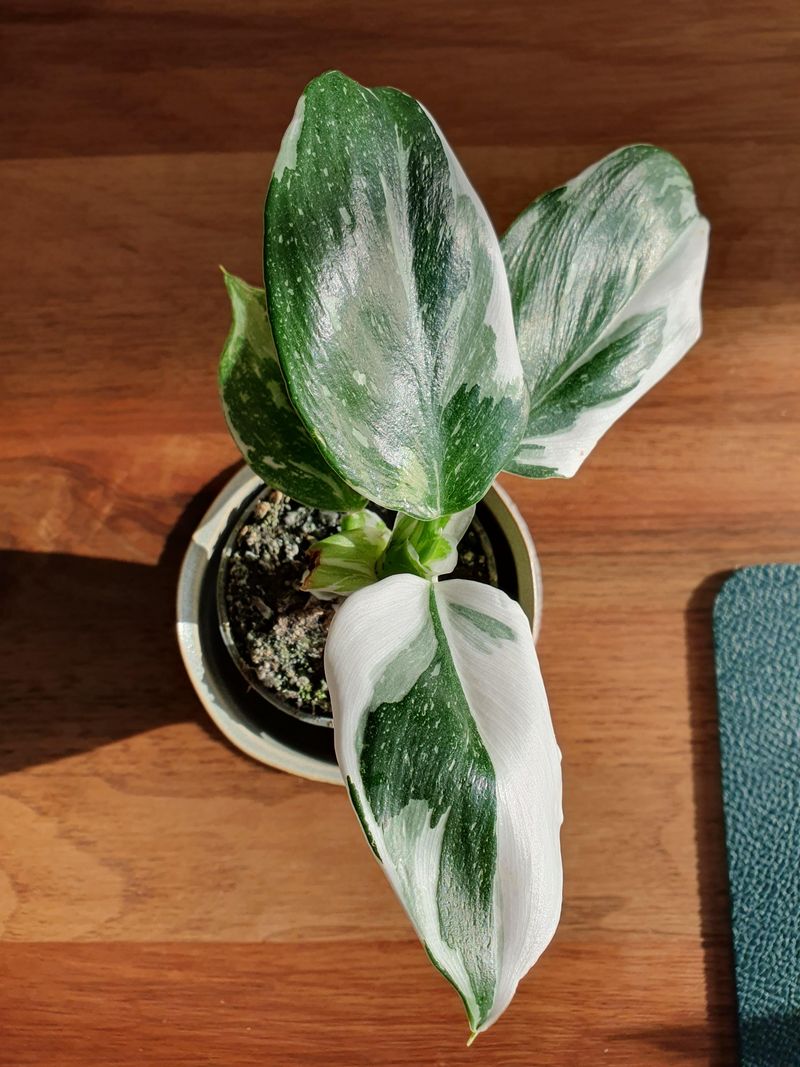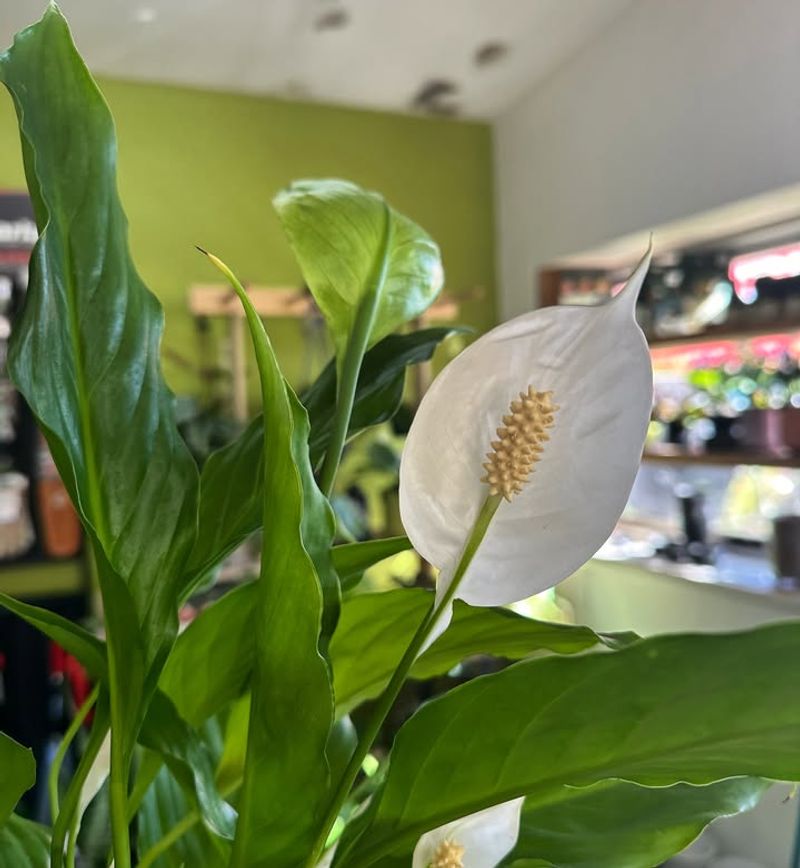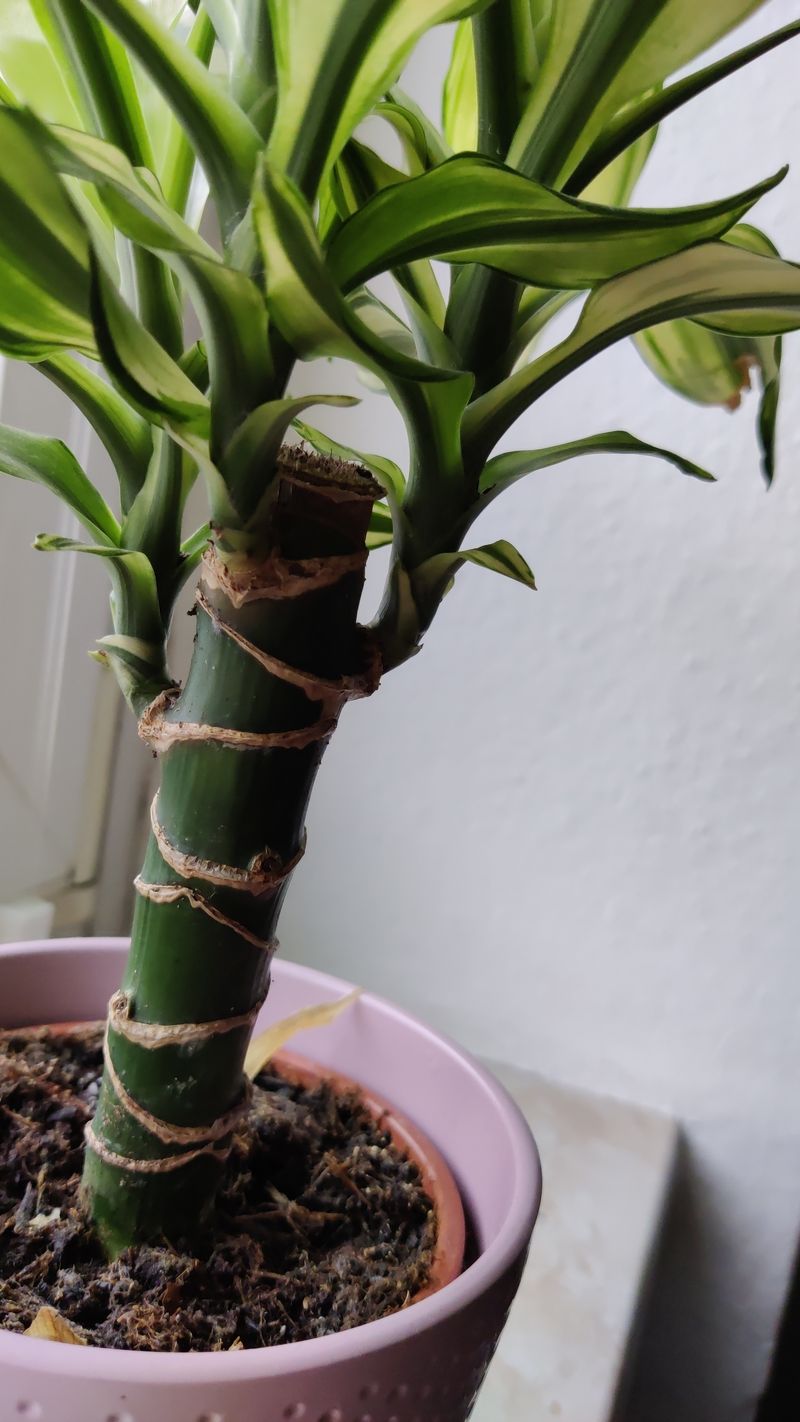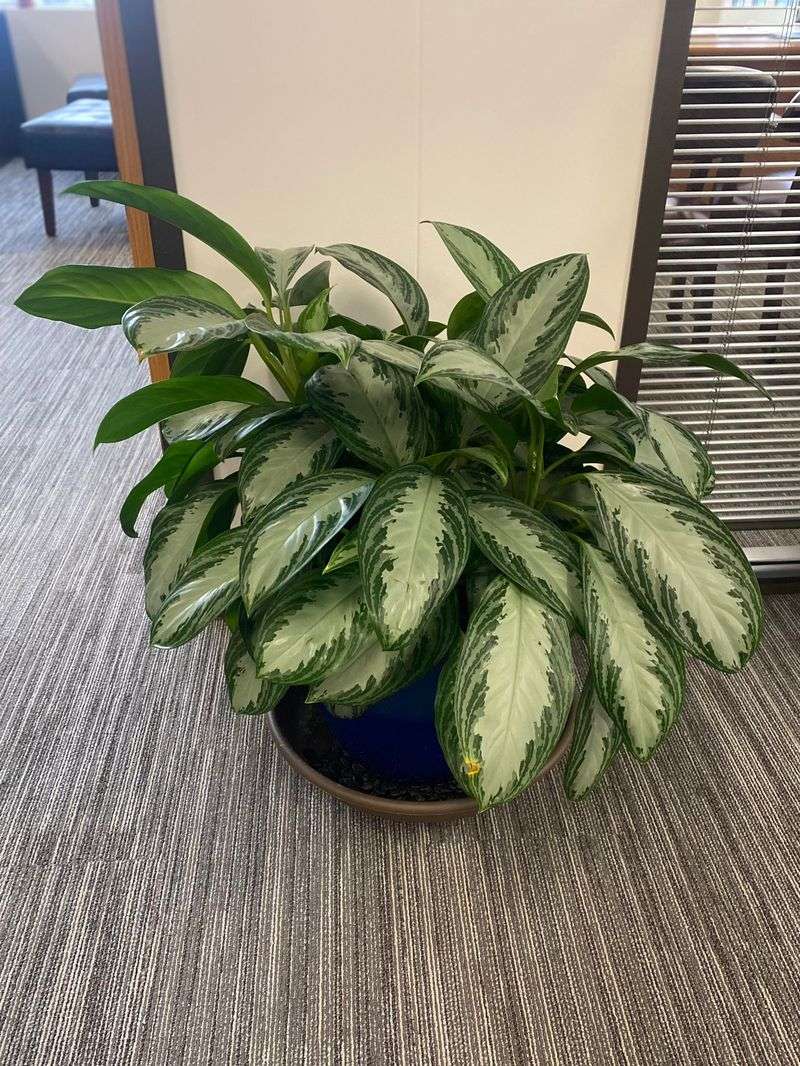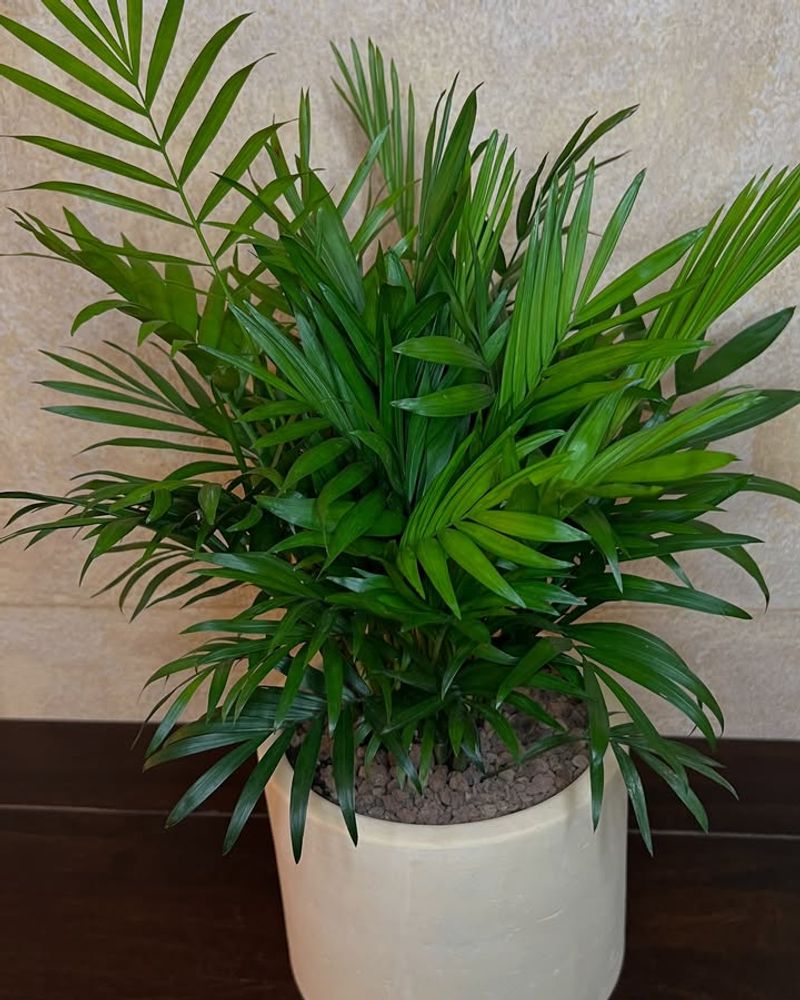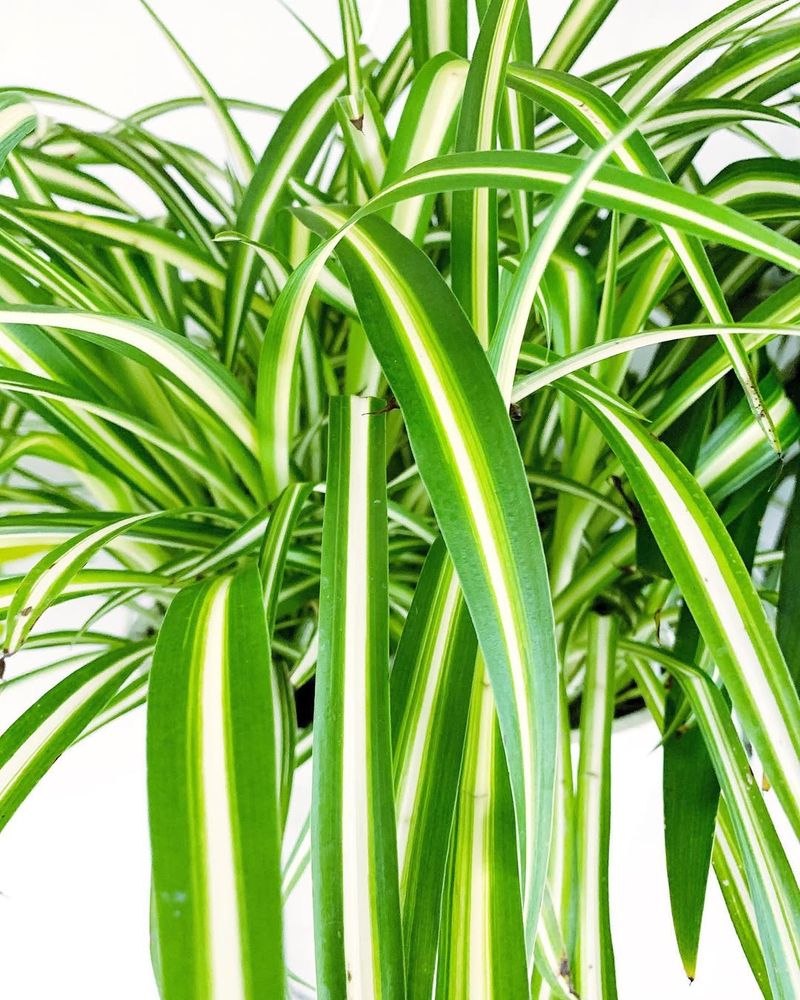Living in South Carolina means dealing with humid summers and mild winters, but what about those interior rooms that never see sunlight? For me, finding plants that can thrive in my South Carolina apartment with no windows has been a fun challenge.
Whether you’re decorating a bathroom, basement, or hallway, the right plants can bring life to these darker spaces. This guide will help you choose hardy, low-light plants that flourish indoors without natural light.
1. ZZ Plant (Zamioculcas zamiifolia)
Few houseplants handle neglect as gracefully as this African native. Its thick, waxy leaves store water efficiently, making it perfect for South Carolina homes where you might forget to water during busy weeks.
Place it in any corner of your windowless room and water only when the soil dries completely. The humidity in South Carolina actually benefits this plant, though it tolerates dry air too. Pair it with pothos or snake plants for a layered look.
I’ve kept one in my hallway for three years with only artificial light, and it continues to push out new growth every spring.
2. Snake Plant (Sansevieria trifasciata)
Known for surviving almost anywhere, this succulent thrives on benign neglect. Its architectural leaves add structure to any space, and it actually prefers indirect or artificial light over harsh sun.
Water sparingly—every two to three weeks works well in South Carolina’s indoor climate. Use well-draining soil and avoid overwatering, which causes root rot. This plant pairs beautifully with cast iron plants and philodendrons in low-light arrangements.
A neighbor in Charleston keeps several varieties in her windowless laundry room, and they’ve thrived for over five years without complaint.
3. Pothos (Epipremnum aureum)
Trailing vines make this one of the most popular houseplants for beginners and experts alike. It grows rapidly even under fluorescent lights, making it ideal for offices and interior bathrooms.
Keep the soil lightly moist but not soggy, and mist occasionally to mimic South Carolina’s natural humidity. Golden pothos and marble queen varieties both tolerate low light, though variegation may fade slightly. Combine with spider plants for textural contrast.
My friend in Columbia drapes hers across shelves in a windowless guest room, and the vines reach over six feet long with minimal care.
4. Cast Iron Plant (Aspidistra elatior)
Earning its name from sheer toughness, this plant withstands neglect, low light, and temperature fluctuations without fuss. Victorian homes often featured it in dark parlors, proving its resilience over centuries.
Water when the top two inches of soil feel dry, roughly once a week in South Carolina homes. It tolerates both humidity and air conditioning well, making it versatile year-round. Consider grouping it with peace lilies or dracaenas for variety.
I’ve seen these flourish in basement rooms across Greenville, where natural light never reaches but artificial lighting keeps them healthy and growing steadily.
5. Philodendron (Philodendron hederaceum)
Heart-shaped leaves cascade elegantly from shelves and mantels, bringing softness to stark spaces. This tropical native adapts remarkably well to artificial lighting and thrives in South Carolina’s naturally humid indoor environment.
Water when the top inch of soil dries out, usually weekly during warmer months. Avoid direct sun, which can scorch leaves, but provide consistent artificial light for best growth. Combine with ferns or prayer plants for a tropical feel.
A coworker in Myrtle Beach keeps one in her windowless break room, where it’s become a conversation starter and morale booster for the entire team.
6. Peace Lily (Spathiphyllum)
White blooms appear even in dim conditions, making this flowering plant a rare find for lightless rooms. It signals when thirsty by drooping slightly, then perks up within hours of watering.
Maintain consistently moist soil and provide moderate humidity, which South Carolina homes naturally offer. Place in bathrooms or kitchens where steam from showers or cooking adds moisture. Pair with Chinese evergreens or lucky bamboo for complementary textures.
My aunt in Rock Hill has three in her windowless powder room, and they bloom reliably twice a year despite zero natural light exposure.
7. Dracaena (Dracaena fragrans)
Striped foliage adds vertical interest to rooms lacking architectural features. Several varieties exist, including ‘Massangeana’ and ‘Lemon Lime,’ all tolerating low light remarkably well.
Water moderately, allowing soil to dry slightly between waterings to prevent root issues common in South Carolina’s humidity. Fluorescent or LED lighting provides sufficient energy for photosynthesis. Mix with rubber plants or ferns for varied heights and textures.
I’ve noticed these in many Spartanburg office buildings, where they line windowless corridors and conference rooms, maintaining their color and structure for years without sunlight.
8. Chinese Evergreen (Aglaonema)
Patterned leaves in silver, pink, or red add color without flowers. This Southeast Asian native tolerates low light better than most foliage plants, making it perfect for South Carolina’s interior spaces.
Keep soil evenly moist but not waterlogged, watering when the surface feels dry. High humidity suits it well, so bathrooms and kitchens work beautifully. Combine with prayer plants or bromeliads for a tropical indoor garden effect.
From my experience in South Carolina homes, choosing the right mix of low-light plants can transform even the darkest room into a welcoming green space.
9. Parlor Palm (Chamaedorea elegans)
The Parlor Palm, with its elegant fronds, brings a touch of the tropics to any room. Originating from the rainforests of Guatemala, this plant is perfect for adding a lush, green vibe to windowless spaces. Its adaptability to low light conditions makes it a favorite among indoor gardeners.
Not only is the Parlor Palm easy to care for, it’s also known for purifying the air. With minimal watering needs, it’s a great choice for those with a busy lifestyle. Imagine a corner of your room transformed by its graceful, arching leaves.
Whether placed in a stylish pot or a decorative basket, the Parlor Palm can enhance the aesthetic of any interior. Its ability to thrive in low light makes it an ideal choice for South Carolina homes that lack natural sunlight.
10. Spider Plant (Chlorophytum comosum)
The Spider Plant is a true survivor, thriving in low light and requiring minimal attention. Its arching leaves, adorned with green and white stripes, create a striking visual effect in any environment. Originating from South Africa, it’s a hardy plant that fits perfectly in windowless rooms.
Known for its air-purifying properties, the Spider Plant is an eco-friendly addition to your home decor. It’s particularly forgiving if you occasionally forget to water it, making it suitable for busy households.
With its charming spiderettes cascading from its pot, this plant can be hung or placed on a shelf, adding dynamic beauty to any space. Its resilience makes it an excellent choice for South Carolina interiors lacking natural light.

